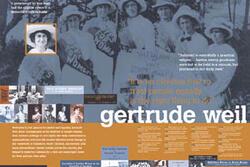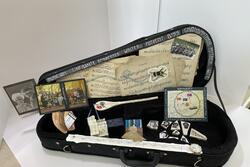Icons for the New Year: Maud Nathan
Maud Nathan was born into uncommon wealth and privilege: the older sister of Annie Nathan Meyer (who would go on to found Barnard College), she grew up in a New York Sephardic family with roots stretching back to colonial America—“the nearest approach to royalty in the United States,” according to Annie. That’s not to say that Maud’s early life was sheltered from hardship: when she was in high school her father hit hard times on Wall Street, and moved the family to Wisconsin. Eventually, her father abandoned the family and her mother, failing to make a new life for herself and her children in her husband’s absence, killed herself.
Annie and Maud returned to New York and 17-year-old Maud quickly married her wealthy first cousin (different times…). She traveled, socialized, and lived the life of a well-heeled society wife—while her little sister founded Barnard. Then in 1895, when she was 28, her only child died suddenly. To say that Maud Nathan’s life was turned upside down after her daughter’s death is not quite right—she was devastated, but she made the choice to change her own life in the aftermath of that loss. Her philanthropist friend Josephine Shaw Lowell suggested that Maud pay greater attention to women’s issues, and pay attention she did. Maud began agitating for better working conditions for working women, then for the vote. Before long, Maud Nathan was a prominent leader of women’s suffrage and the one of the most important Jewish women activists in America.
In Maud Nathan’s second life as an activist, she became president of the New York Consumers’ League, vice president of the Woman’s Municipal League of New York, and chair of the industrial committee of the General Federation of Women’s Clubs. Her husband, once her companion at parties and fundraisers, began marching beside her at suffrage parades.
Until her death 1946, Maud spoke out against racism, for consumer education, and staunchly supported women’s rights. Her legacy as a social reformer dwarfs her origins as a socialite, though understanding the full scope of her life makes her story and triumphs even richer. Her life teaches us valuable lessons for the New Year: radical change can come out of life’s darkest chapters, and resilience, especially when paired with vision and a willingness to learn and grow, can get us just about anywhere.






